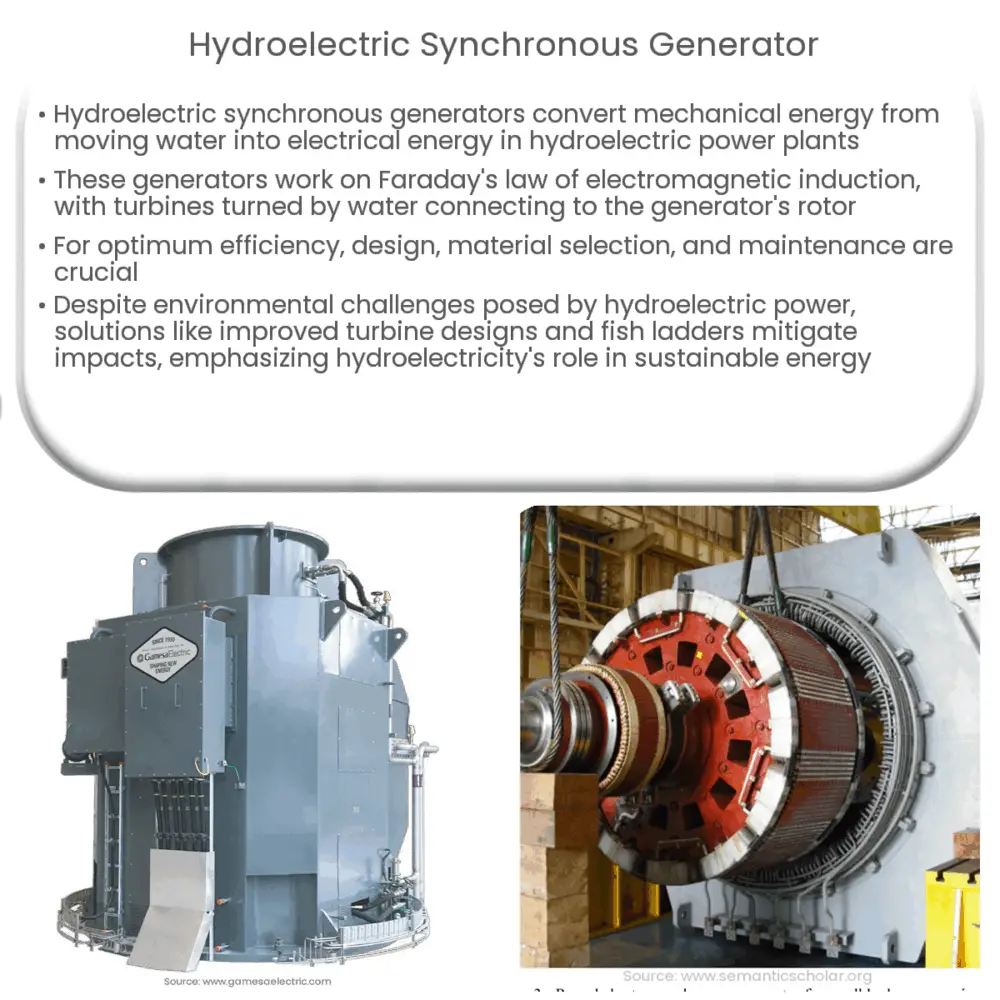Explore the vital role of hydroelectric synchronous generators in renewable energy production, their optimization, and environmental challenges.

Introduction to Hydroelectric Synchronous Generators
The energy landscape has evolved over time, moving towards more sustainable and renewable options. One of these is hydroelectric power, a well-established source of renewable energy. At the heart of any hydroelectric power plant is the hydroelectric synchronous generator, a critical component responsible for converting the mechanical energy of moving water into electrical energy.
Understanding Hydroelectric Power
Hydroelectric power essentially harnesses the energy of flowing or falling water to generate electricity. In a typical hydroelectric power plant, a dam is constructed on a large river to create a reservoir. The potential energy stored in this reservoir is then converted into kinetic energy as the water flows downhill through turbines. The mechanical energy created by the rotating turbine is then converted into electrical energy by a generator, specifically a synchronous generator.
Role of Synchronous Generators
A synchronous generator, also known as an alternator, is a type of electric generator that produces alternating current (AC). In hydroelectric power plants, these generators play a crucial role in the final step of power generation. When the turbine spins, it turns the rotor of the synchronous generator, inducing a flow of electrons – electricity.
Working Principle of Hydroelectric Synchronous Generators
The working principle of a hydroelectric synchronous generator is based on Faraday’s law of electromagnetic induction. This law states that a changing magnetic field within a coil of wire induces an electromotive force (EMF) in the wire. In the context of a hydroelectric synchronous generator, the magnetic field is created by the rotor, which rotates due to the mechanical energy of the turbine.
- Turbine: The turbine, turned by flowing water, is connected to the rotor of the generator.
- Rotor: The rotor generates a moving magnetic field as it spins.
- Stator: The stator houses a set of windings or coils through which the magnetic field moves, inducing an electromotive force.
In the next section, we will delve deeper into the design and optimization of hydroelectric synchronous generators, and understand how their efficiency and power output can be enhanced.
Design and Optimization of Hydroelectric Synchronous Generators
For a hydroelectric synchronous generator to function efficiently, it is imperative that its design and operating conditions are optimized. This involves a careful selection of materials, precise manufacturing, and diligent maintenance.
- Materials: The choice of materials for the rotor and stator is critical. These materials should have excellent magnetic properties, high electrical conductivity, and good thermal stability.
- Manufacturing: The manufacturing process should ensure that the components are accurately fabricated to minimize energy losses and maximize efficiency.
- Maintenance: Regular maintenance is necessary to detect and correct any faults that could affect the generator’s performance.
Enhancing Efficiency and Power Output
Hydroelectric synchronous generators’ efficiency and power output can be enhanced in several ways. One method is to increase the water head, which is the height difference between the water surface and the turbines. A higher water head results in a greater flow of water, spinning the turbine faster and, consequently, increasing power output. Additionally, the efficiency of the turbine and the generator can be improved through advanced design techniques and materials.
Challenges and Solutions
Despite the many advantages of hydroelectric power, there are challenges. Environmental impacts, such as altering waterways and affecting aquatic life, are significant concerns. However, with careful planning and consideration, these impacts can be mitigated. The development of fish ladders and improved turbine designs are just some of the solutions that have been proposed to minimize the environmental impact of hydroelectric power plants.
Conclusion
In conclusion, hydroelectric synchronous generators are an essential component of hydroelectric power plants, playing a crucial role in the conversion of mechanical energy to electrical energy. Their design, manufacturing, and maintenance greatly influence their efficiency and power output. While hydroelectric power has its challenges, innovative solutions continue to emerge, making it a vital part of the world’s move towards sustainable and renewable energy sources.

